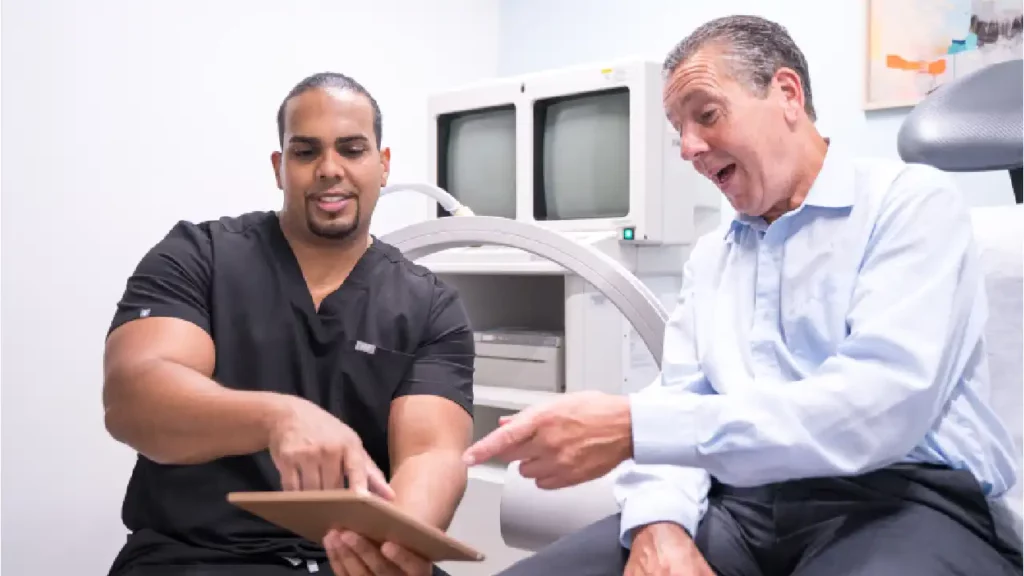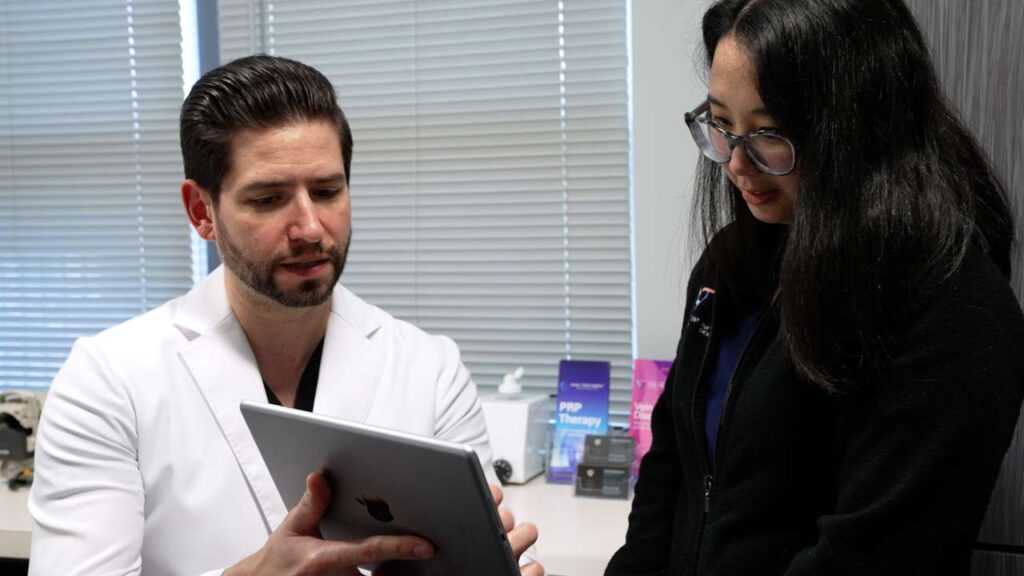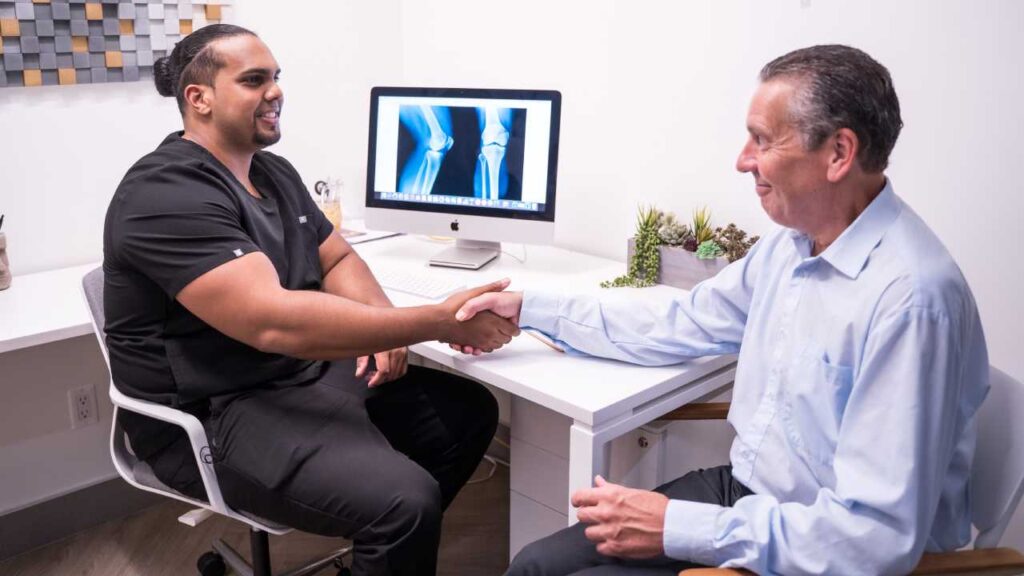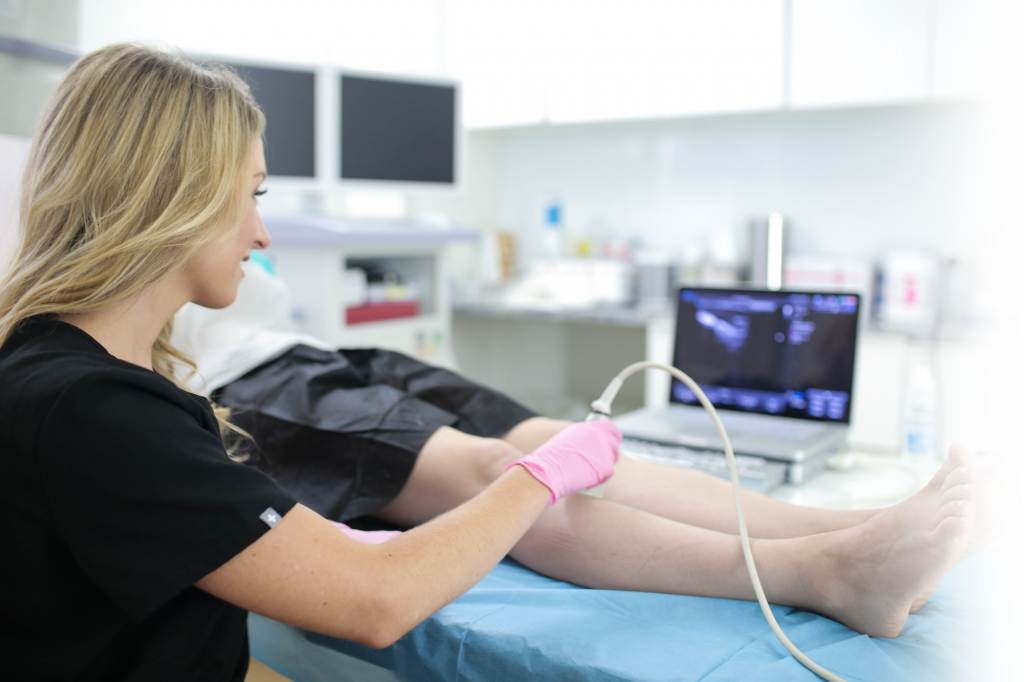Meet Dr. Sareh Rajaee
Dr. Sareh Rajaee is the medical director of our state-of-the-art spider vein and varicose vein treatment centers in New Jersey, including the vein clinics in Clifton, Paramus, and Woodland Park. She is also considered the best vein specialist in New Jersey, as evidenced by her unanimous 5-star ratings and reviews from all patients. You can find Dr. Rajaee at her spider vein and varicose vein treatment center at 1117 US-46 Suite 205, Clifton, just past the Ford dealership on route 46-E. If you’re in Passaic County, please book an appointment online or call +1 973-447-1383.
The following is an overview of Dr. Rajaee’s exceptional educational background:
- Double majors in Biomedical Engineering and German at the University of Rhode Island
- Medical doctorate from the Alpert Medical School at Brown University
- Master’s in Public Health at the Harvard School of Public Health
- Residency in Vascular Surgery from the Yale New Haven Hospital
- Fellowship in endovascular procedures for peripheral arterial disease and vein disease
- Board-certified by the American Board of Venous and Lymphatic Medicine
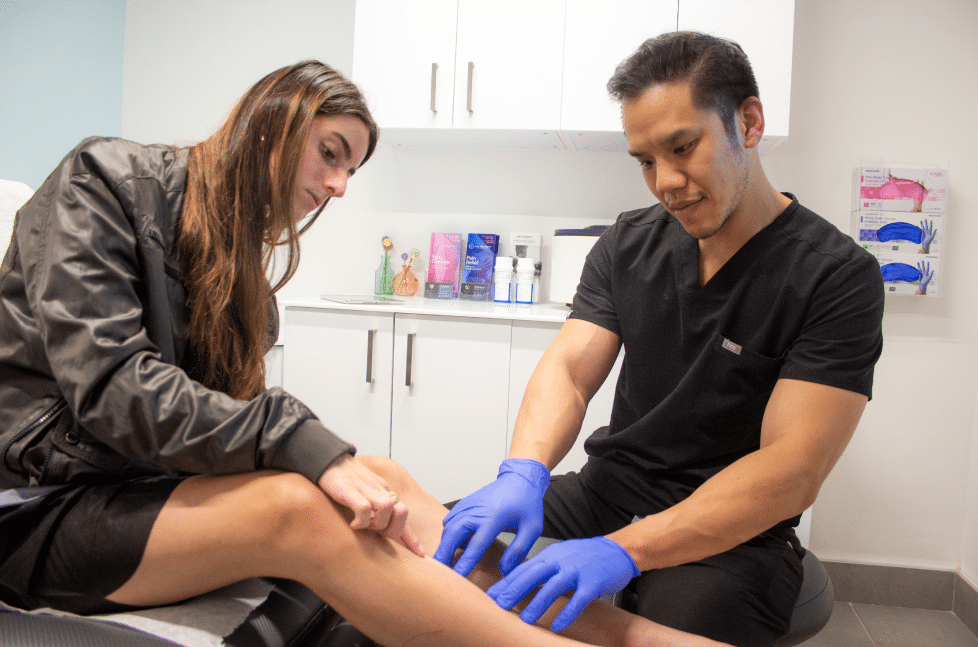
Dr. Rajaee is a board-certified vein doctor. That means she has undergone additional training and passed numerous complicated professional milestones to establish herself as one of the country’s leading vein specialists. She’s also incredibly talented, compassionate, and friendly, and she believes your vein treatment process should be emotionally and physically comfortable. That’s why she goes out of her way to ensure you understand every aspect of the vein treatment process, the necessity of the treatment, and all of your vein treatment options.
Below, we provide a step-by-step overview of Dr. Rajaee’s complete vein treatment process.
Step 1: Physical Examination
Before describing the vein treatment process, it’s important to highlight how spider veins and varicose veins are formed. Most people assume spider veins and varicose veins are cosmetic problems, but that’s not entirely true. Spider veins and varicose veins are generally caused by a dangerous circulatory disorder known as chronic venous insufficiency — this is a medical condition wherein the collapse of vein valves leads to the accumulation of blood in leg veins. The continued accumulation of blood in leg veins leads to vascular dilation, spider veins, varicose veins, and numerous other problems.
Your vein treatment process starts with a thorough physical examination for the signs and symptoms of venous insufficiency. Treating spider veins without addressing the root cause is pointless because the spider veins will simply come back later — that’s why medical spas have such a high rate of recurrence. Our vein doctors carefully examine your leg veins — they examine the location and size of your spider veins and varicose veins to determine the likelihood of vein disease. They also ask about your symptoms — leg heaviness, restless leg syndrome, and frequent leg cramps are common symptoms of vein disease.
Step 2: Ultrasound Diagnosis
The physical examination is followed by vascular imaging tests. Our vein doctors perform an ultrasound diagnosis, known as duplex ultrasound, to visualize the direction of blood flow in your leg veins. This diagnostic test involves channeling ultrasound energy into your legs to examine the blood flow. The vein doctor studies the results of the test to identify chronic venous insufficiency, curate the ideal vein treatment plan for you, and provide visual evidence in support of your insurance claim. You should generally avoid vein clinics that don’t conduct a thorough ultrasound diagnosis.
Step 3: Treatment Planning
After ultrasound diagnosis, the vein specialist will curate a personalized vein treatment plan for you. The vein doctor will select the ideal vein treatments according to your medical history, symptoms, diagnostic results, insurance coverage options, and other factors. Furthermore, the vein doctor will also walk you through every step of the vein treatment process and give you all the information necessary to make an educated decision. Our spider vein and varicose vein treatment centers also follow a “no surprise billing” policy, which means you receive a complete breakdown of the vein treatment cost before your procedure.
Step 4: Treat Vein Disease
If you have chronic venous insufficiency, your vein treatment plan will start with minimally invasive procedures for the underlying vein disease. The best minimally invasive procedures for vein disease include radiofrequency ablation, endovenous laser ablation, and venaseal. The following is a brief description of your vein treatment options:
- Radiofrequency Ablation: The vein doctor makes a small incision on the skin’s surface to drive a catheter into the diseased saphenous vein under ultrasound guidance. When activated, the catheter generates thermal energy to destroy the diseased vein.
- Endovenous Laser Ablation: The vein doctor makes a small incision to insert a laser fiber into the diseased saphenous vein under ultrasound guidance. Once activated, the laser energy collapses the diseased vein to restore blood circulation to the heart.
- VenaSeal: The vein doctor injects a medical-grade adhesive into the diseased saphenous vein to seal its walls shut. The accumulated blood reroutes into healthier leg veins, restoring optimal blood circulation to the heart.
Step 5: Spider Vein Treatment
After the primary vein treatment, the vein doctor will perform the cosmetic vein treatment for the superficial varicose veins and spider veins. Ambulatory phlebectomy and sclerotherapy are the best cosmetic treatments for varicose veins and spider veins.
- Ambulatory Phlebectomy: The vein specialist physically extracts the superficial varicose veins through small incisions on the skin’s surface.
- Sclerotherapy: The vein physician injects a sclerosant medicine into the spider veins to turn them into hardened scar tissues eventually absorbed by the body.
After your vein treatment, the vein specialist will provide an overview of your post-treatment recovery guidelines. You have to wear compression stockings for a few weeks and avoid strenuous workouts for a few days, but you can resume most of your daily activities the moment you leave the vein clinic in New Jersey.
